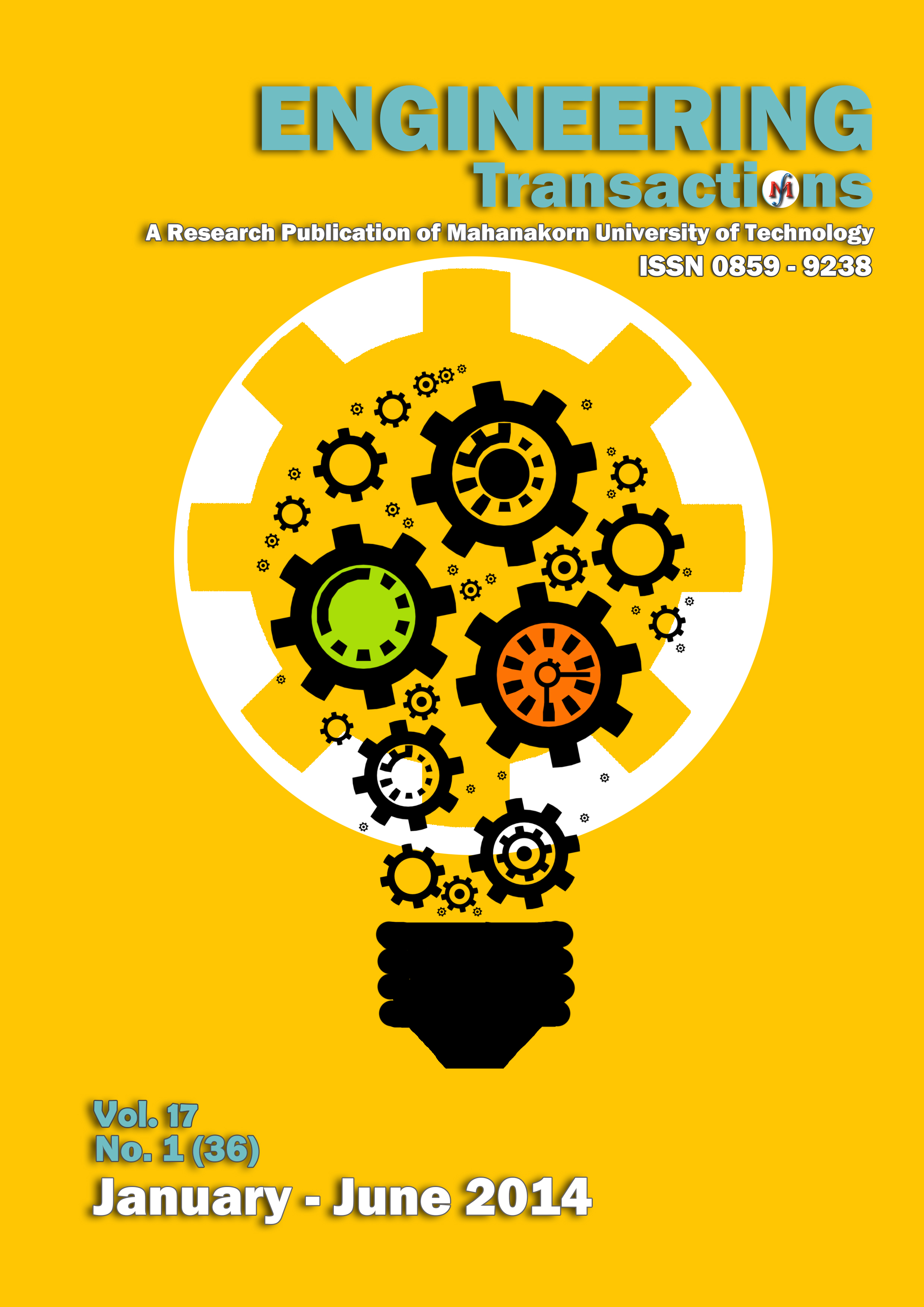A Study on Energy Performance, Environmental Impacts and Economic Analysis including External Cost of a Solar Water HeaterHaving Heat Pump as an Auxiliary
Main Article Content
Abstract
A solar water heater with heat pump as an auxiliary (SWHHP) was investigated in terms of system energy efficiency, environmental impacts and economic costs including global warming externality evaluation. The information data were compared with those of a conventional electric heater (EH) and a common solar water heater with electrical heater as an auxiliary (SWHEH). A profile of hot water consumption during a day was selected from a children nursery office in Chiang Mai, Thailand of which the average daily amount of hot water at 50oC was about 610 liters. In term of system energy efficiency, the SWHHP consumed less electricity consumption significantly compared to the EH and the SWHEH. For environmental impact aspect in term of global warming, the life cycle assessment (LCA) was applied to evaluate the impacts due to their raw material and conventional energy consumptions during the system operation over the entire life of 10 years. It was found that in each unit, the main impact came from electricity consumption of the system operation. The SWHHP was also the best system that gave the lowest environmental impact. For economic analyses, the SWHHP showed the SPP of 3.94 years and IRR of 21.80 % at the optimum area of 4 m2. When the environmental impact was considered, the SWHHP could reduce CO2 around 75.04% and 66.45% compared with the EH and the SWHEH, respectively. The SWHHP also gave the best solution when the external cost was included.
Article Details
Copyright @2021 Engineering Transactions
Faculty of Engineering and Technology
Mahanakorn University of Technology
References
Charoenjit, C., Tiansuwan, J., Tawarangkura, N., Tia, W. and Kiatsiriroat, T. 2008, Comparison of Solar Water Heating System Performances with Assisted Heat Pump Having R-134a and R-22 as Working Fluids, Proceedings of the 4th Conference on Energy, Heat and Mass Transfer in Thermal Equipments, Chiang Rai, Thailand, pp. 75-82 (in Thai).
Ardente, F., Beccali, G., Cellura, M. and Brano, V. L. 2005, Life Cycle Assessment of a Solar Thermal Collector, Renewable Energy, vol. 30, pp. 1031-1054.
Burapa, M., Vorayos, N., Kiatsiriroat, T. and Chomdee, S. 2008, Simplified Model of Solar Water Heating with Heat Pump Assisted, Industrial Technology , Lampang Rajabhat University, vol. 1 (2), pp. 15-23.
Purohit, P. and Michaelowa, A. 2008, CDM Potential of Solar Water Heating Systems in India, Solar Energy, vol 82, pp. 799-811.
PRe consultants, the Netherlands, 2007, SimaPro software version 7.1
Khamkure, S. 2004, An Evaluation of Wastewater Treatment Plant of Electronic Products Using Life Cycle Assessment, Master Thesis of Environmental Engineering, Graduate School Chiang Mai University, Thailand.
Victoria Transport Policy Institute, 2009, Transportation Cost and Benefit Analysis II – Air Pollution Costs, [Online], Available for http://www.vtpi.org


